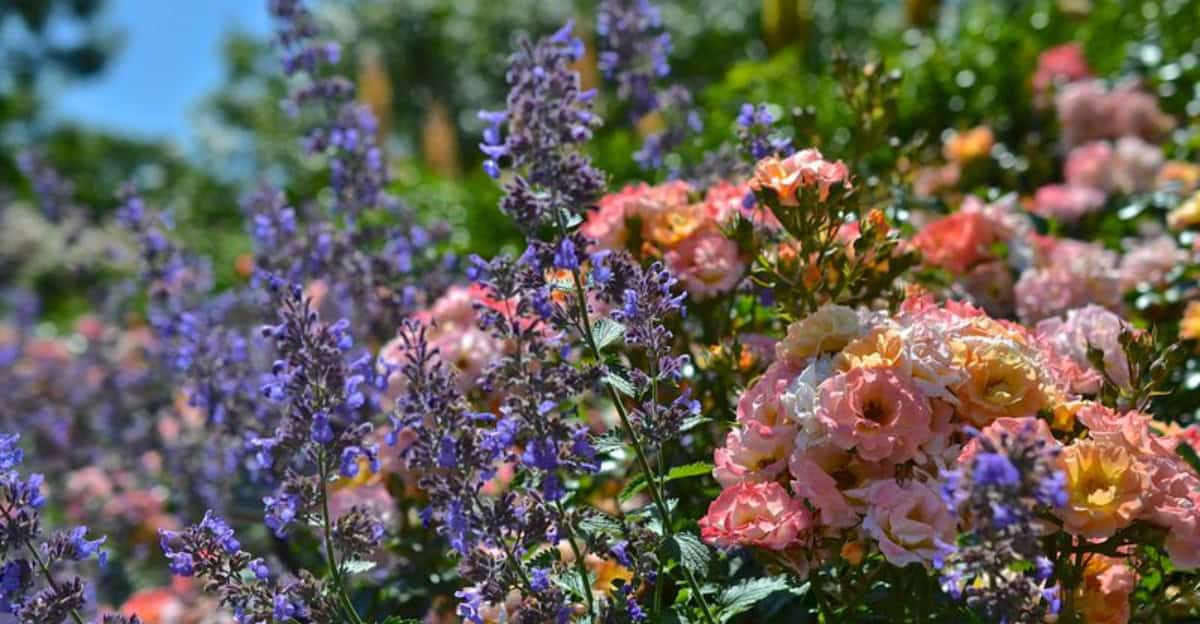Roses are a delightful addition to any garden, but did you know that certain plants can enhance their beauty and health?
Companion planting not only helps deter pests but also encourages disease resistance and vibrant growth.
In this article, we’ll explore 10 plants and flowers that perfectly complement roses, providing both aesthetic appeal and practical benefits.
1. Lavender

Lavender is an ideal companion for roses, not just because of its charming purple hue. Its strong fragrance helps deter pests that often target roses.
Planting lavender around your roses can create a fragrant and colorful border. Its drought-resistant nature means it won’t compete with roses for water.
2. Catmint

Catmint, with its soft purple blooms, is a beautiful plant that complements the elegance of roses.
Known for its ability to repel aphids and other pests, catmint is a practical addition to any rose garden. Its sprawling habit provides excellent ground cover, suppressing weeds and maintaining soil moisture.
3. Chives
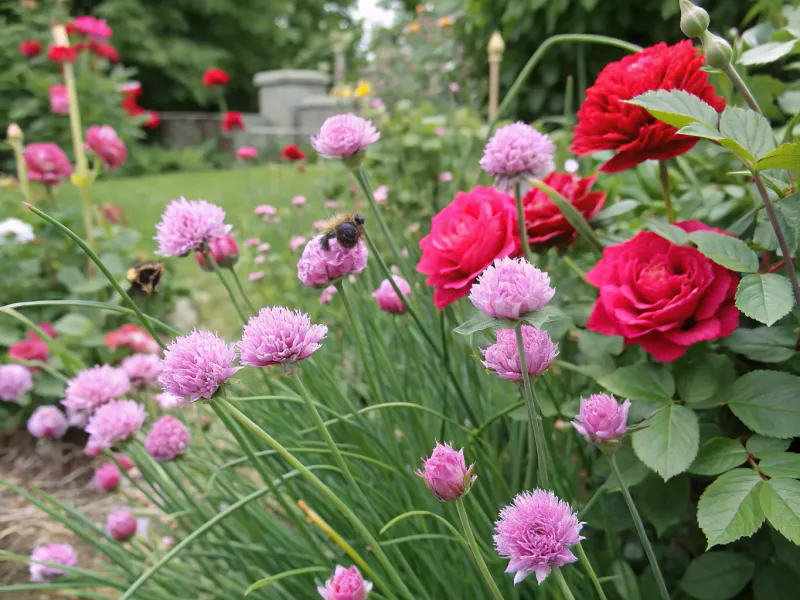
Chives may seem an unlikely match for roses, but their compatibility is unrivaled. These small, hardy plants produce pink flowers that bring a touch of whimsy to your garden.
The onion-like aroma of chives deters pests such as aphids, while their flowers attract beneficial insects.
4. Marigolds
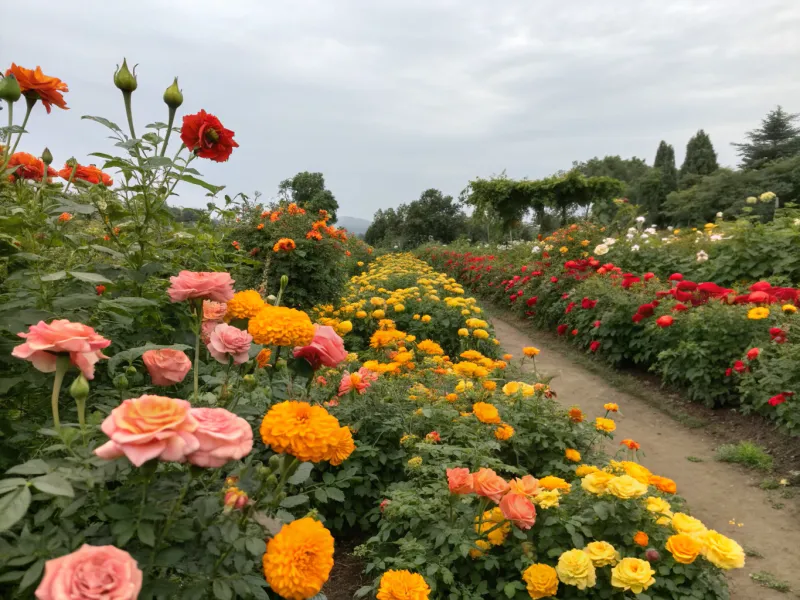
Marigolds are a gardener’s best friend, especially when planted near roses. Their bright yellow blooms add a splash of color, creating a visually stunning contrast.
More importantly, marigolds release a scent that deters pests like nematodes and aphids. These hardy flowers thrive in various climates and can grow in similar conditions to roses.
5. Geraniums
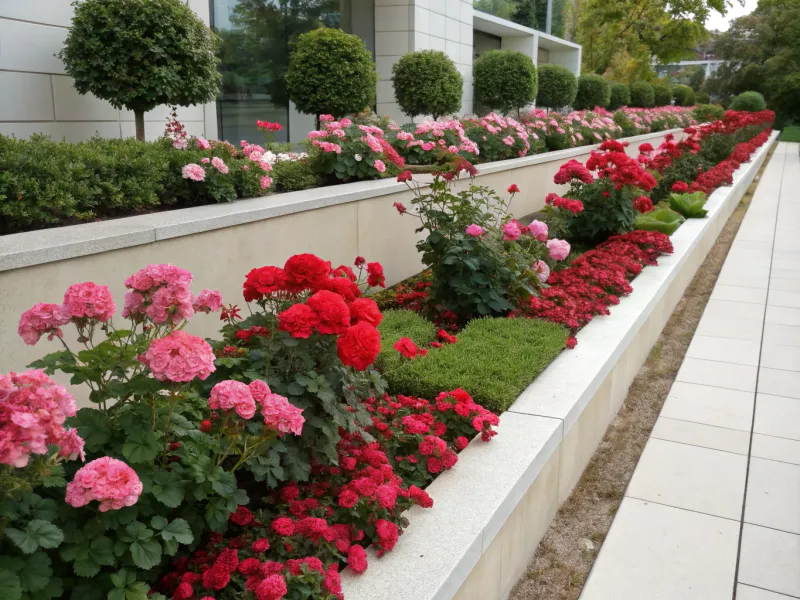
Geraniums offer a fantastic partnership for roses, thanks to their pest-repelling properties. Their vibrant flowers come in various colors, adding depth and texture to your garden’s design.
Geraniums help keep leafhoppers and other pests at bay, protecting your roses. They thrive in well-drained soil and sunny spots, perfectly complementing the needs of roses.
6. Sage

Sage is more than a culinary herb; it’s a valuable companion plant for roses. Its fragrant leaves repel pests like beetles and attract pollinators essential for a healthy garden.
Sage’s purple flowers beautifully contrast with rose blooms, adding aesthetic value. This hardy plant thrives in well-drained soil and full sun, mimicking the conditions loved by roses.
7. Yarrow
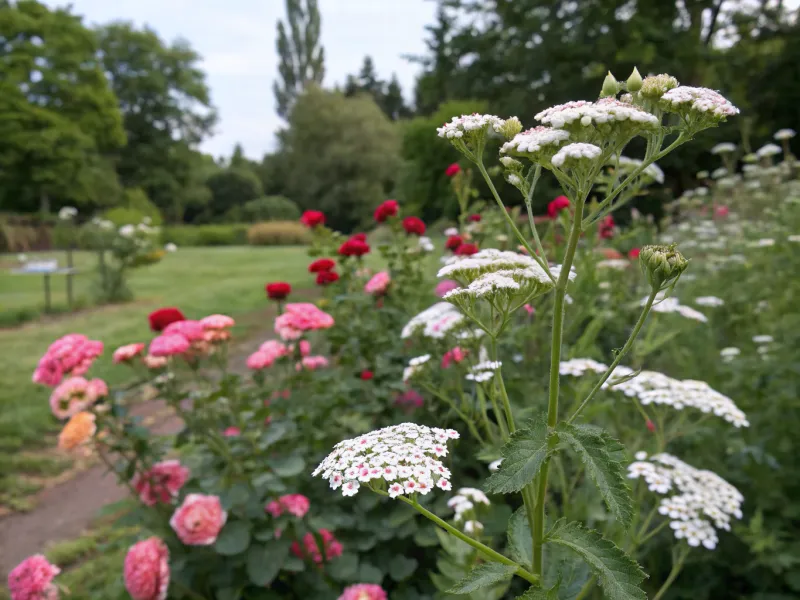
Yarrow is a versatile plant that pairs seamlessly with roses, offering several benefits. Its feathery foliage and clustered white flowers add textural contrast to rose gardens.
Yarrow attracts beneficial insects like ladybugs, which help control aphid populations. It thrives in similar conditions to roses, loving full sun and well-drained soil.
8. Alliums

Alliums are a striking companion for roses, featuring large spherical blooms that create a dramatic effect. Their strong scent deters pests such as aphids and rodents, protecting your roses.
Alliums’ tall stems add height and architectural interest to the garden, complementing rose bushes beautifully.
9. Bee Balm
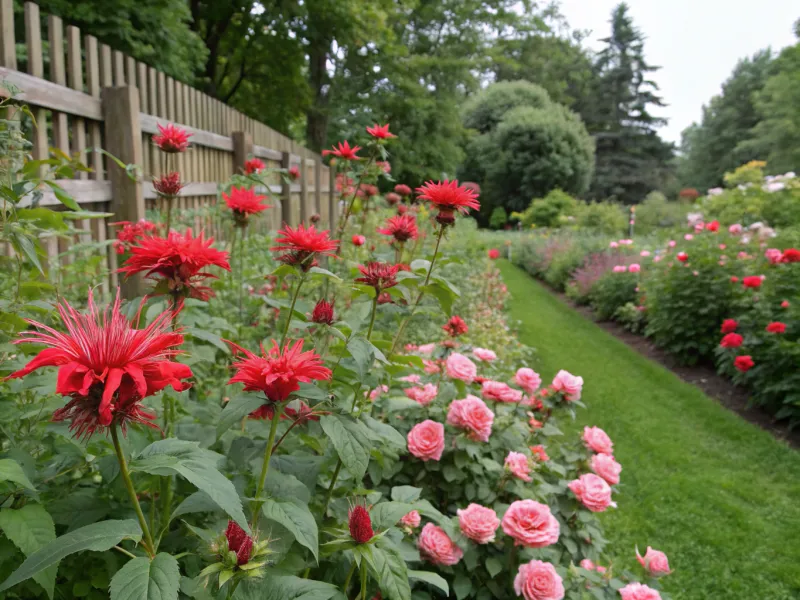
Bee balm is a stunning addition to rose gardens, known for its vibrant red blooms. It attracts pollinators such as bees and butterflies, vital for a thriving garden ecosystem.
Bee balm’s scent also helps repel pests, enhancing the health of your roses. This plant prefers sunny spots and well-drained soil, making it a compatible partner for roses.
10. Foxgloves
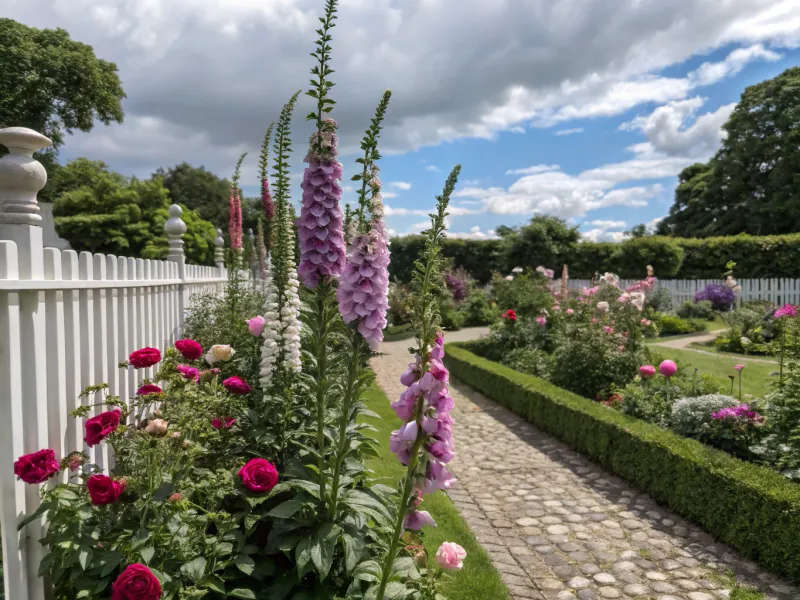
Foxgloves are tall, elegant plants that add vertical interest to rose gardens. Their tubular flowers come in various colors, creating a striking complement to roses.
Foxgloves attract hummingbirds and beneficial insects, enhancing pollination. They thrive in similar conditions to roses, preferring full sun or partial shade with well-drained soil.

